Fewer friends, relationships on the decline, delayed adulthood, trust at an all-time low, and many diseases of despair. The prognosis is not great.
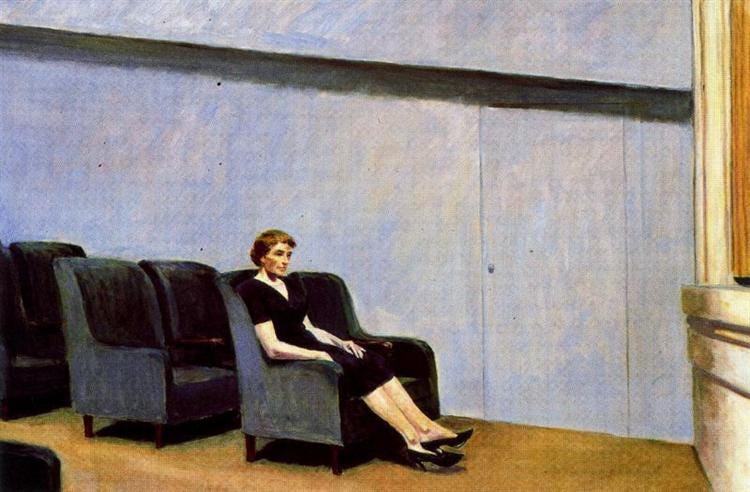
One of the most discussed topics online recently has been friendships and loneliness. Ever since the infamous chart showing more people are not having sex than ever before first made the rounds, there’s been increased interest in the social state of things. Polling has demonstrated a marked decline in all spheres of social life, including close friends, intimate relationships, trust, labor participation, and community involvement. The trend looks to have worsened since the pandemic, although it will take some years before this is clearly established.
The decline comes alongside a documented rise in mental illness, diseases of despair, and poor health more generally. In August 2022, the CDC announced that U.S. life expectancy has fallen further and is now where it was in 1996. Contrast this to Western Europe, where it has largely rebounded to pre-pandemic numbers. Still, even before the pandemic, the years 2015-2017 saw the longest sustained decline in U.S. life expectancy since 1915-18. While my intended angle here is not health-related, general sociability is closely linked to health. The ongoing shift has been called the “friendship recession” or the “social recession.”
My intention here is not to present a list of miserable points, but to group them together in a meaningful context whose consequences are far-reaching. While most of what I will outline here focuses on the United States, many of these same trends are present elsewhere because its catalyst is primarily the internet itself. With no signs of abating, a new kind of sociability has only started to affect what people ask of the world through the prism of themselves.
The topic has directly or indirectly produced a whole genre of commentary from many different perspectives. Many of them touch on the fact that the internet is not being built with pro-social ends in mind. Increasingly monopolized across a few key entities, online life and its data have become the most sought-after commodity. The everyday person’s attention has thus become the scarcest resource to be extracted. Other perspectives, often on the left, also stress economic precarity and the decline of public spaces as causes. Some of these same criticisms have been adopted by the New Right, who also indict the culture at large for undermining traditions of sociality, be it gender norms or the family. Believing it disproportionately affects men, this position has produced many lifestylist spinoffs: Men Going Their Own Way (MGTOW), trad-life nostalgia, inceldom, masculinist groups, and hustle culture with a focus on 'beating the rat race.’ All of these subcultures are symptoms of the social recession in some way, for better or worse.
Often standing outside this conversation altogether are the self-described ‘adults in the room’ — professional media pundits, politicians, bureaucrats, and the like, disconnected from the problem themselves, but fixated on its potential to incubate political extremism. Entire institutes have been set up to study, monitor, and surveil the internet’s radicalizing tendencies buoyed by anti-social loneliness. The new buzzword often used in this sphere is “stochastic terrorism” and the need to contain some unknown, dangerous online element taking hold of the dispirited. The goal here is not to solve a pernicious problem, but instead to pacify its most flagrant outbursts.
We have no clear, comparative basis on which to judge what will emerge from the growing number of people who feel lost, lonely or invisible. The closest comparison comes from the early 20th century when, for the first time, millions of provincial people moved to major cities to pursue their dreams. Many uprooted themselves then only to be poor and unfulfilled, who were later easily excited into a mania over mass politics and culture. That’s why German novelist Herman Broch in his story The Sleepwalkers (1930) writes his panorama of WWI as rooted in “the loneliness of I” among three of his characters. Likewise, nobody cares for Gregor Samsa in Franz Kafka’s The Metamorphosis (1915), who is compelled to go to work despite not even recognizing himself any longer. The alienated product of mass industrial society is familiarly described in W.H. Auden’s poem The Age of the Anxiety (1948) — “miserable wicked me / how interesting I am.”
While data and polling have their limits, they are a useful starting point for concretely discussing the social recession and whether it’s here to stay. I’ve collected some numbers on the shift happening across a few key areas: community, friendship, life milestones, relationships, and trust.
By the Numbers — Community & Social Activities
In 2000, Bowling Alone by political scientist Robert D. Putnam was published to much praise for its breadth of research. The book documents the decline of sociability in the United States since the 1950s. It mainly traces the dwindling number of Americans frequenting civic organizations such as religious services, volunteer work, sports clubs, hobbyist groups, and so on.
The book was one of the first to quantitatively determine that, yes, the traditional American community was on the decline. It remains a staple within political science courses today. Yet, many of the metrics used in the study are today a bit dated. Even the title does not evoke the relevance it once did (not even bowling has been spared the decline of social activities). Moreover, in the year 2000, it was far easier to see the trend as ‘fixable’ because it was not overwhelmingly determined by any one factor.
Putnam’s work is an assessment of social life of a different kind, before the internet's mass adoption. That world is clearly never coming back. If we take one metric commonly cited in the book, church membership, the decline Putnam describes is exceptionally mild compared to what came after.
U.S. Church Membership Falls Below Majority for First Time (Gallup, 2021)
Rather than go through them one by one, Putnam’s trends can be assessed more contemporaneously through a simple metric: screen time, a proxy for time spent not doing community activities in person. Rather than bowling alone, Americans are instead browsing alone over 7 hours daily on average and increasing every year. As of 2021, some 31% of Americans claim to be online “almost constantly.” The world Putnam is describing arguably does not register with the same relevancy it once had.
Friendships
If we are browsing alone rather than bowling alone, the real metric to look at is friendships themselves. The past few decades have recorded a steep decline in people’s circle of friends and a growing number of people who don’t have any friends whatsoever. The number of Americans who claim to have “no close friends at all” across all age groups now stands at around 12% as per the Survey Center on American Life.
The percentage of people who say they don’t have a single close friend has quadrupled in the past 30 years, according to the Survey Center on American Life.1
It’s been known that friendlessness is more common for men, but it is nonetheless affecting everyone. The general change since 1990 is illustrated below.
Taken from "Adrift: America in 100 Charts" (2022), pg. 223. As a detail, note the drastic drop of people with 10+ friends, now a small minority.
The State of American Friendship: Change, Challenges, and Loss (2021), pg. 7
Although these studies are more general estimates of the entire population, it looks worse when we focus exclusively on generations that are more digitally native. When polling exclusively American millennials, a pre-pandemic 2019 YouGov poll found 22%have “zero friends” and 30% had “no best friends.” For those born between 1997 to 2012 (Generation Z), there has been no widespread, credible study done yet on this question — but if you’re adjacent to internet spaces, you already intuitively grasp that these same online catalysts are deepening for the next generation.
Life Milestones & Relationships
There have been many psychological profiles of “late adulthood,” common among those born from the 1990s onward. Many of the milestones — getting a driver’s license, moving out, dating, starting work, and so on — have been delayed for many young adults.
The trend became obvious starting in the 2010s. In 2019, it was compiled in a comprehensive study titled The Decline in Adult Activities Among U.S. Adolescents, 1976-2016.
Illustrated by Axios (2017).
The same paper looked at how often high schoolers went out without their parents, showing a similar decline.
The Decline in Adult Activities Among U.S. Adolescents, 1976-2016 (2019)
Much of this is not necessarily “bad”, and it’s more symptomatic than anything else. It’s something of a mixed bag. For example, delayed adulthood is linked to less of a desire to engage in risky behavior like delinquency or excess drinking. While risk avoidance may be preferable, it also tracks along a decline in sociability. It is therefore bundled with other personal costs: mental health among people native to the internet continues to worsen amid an increase in so-called ‘diseases of despair’ in the United States more generally. These were the leading causes of the drop in life expectancy before the pandemic.
Finally, there is the most-discussed stat of them all — the rapid increase of people who have had no sexual relations since they turned 18, amid a time of unprecedented sex positivity no less. Writer Katherine Dee, who writes on the substack Default Friend, has flipped this common understanding and said that the coming wave is one of disembodied ‘sexual negativity’ rather than free love (just FYI, her article is paywalled).
Compiled by /u/TheGoldenChampion
The results, though, are not unexpected. A disembodied, online life produces less physical intimacy despite mass culture presenting us with an image that says otherwise. The stat went viral precisely because it showed what many were suspecting and could now concretely confirm.
Trust
One last aspect missing from all this is trust. Trust is the building block of all sociability. The past 50 years have been nothing short of America’s transformation from a high-trust to a low-trust society, a collapse of authority across all levels: social, political, and institutional.
In 2022, trust dropped to a new average low—a development that has been the trend since the 1970s.
Confidence in U.S. Institutions Down; Average at New Low (Gallup, 2022)
The decline of trust in the United States across the board is a standalone topic all on its own, already the subject of many books and investigations. I mention it here because trust is the social glue of any society. Regimes crumble and collapse due to a lack of belief in themselves. A lack of trust in institutions makes for a lack of trust in other people as well.
Protection, Progress, and Perseverance (2020), pg. 24
Americans' Trust in Themselves (2021). Although higher than the Pew Research findings, the poll was more general rather than being on the public’s “political wisdom.”
Most Americans do perceive that trust has diminished among the general population. The vast majority are “worried about the declining level of trust in each other.” Many also feel that they no longer recognize their own country (although this is likely caught up somewhat in political partisanship).
The state of personal trust (Pew Research Center, 2019).
The erosion of trust in the U.S. began decades ago after Watergate and the proceeding “Crisis of Confidence” during the 1970s. Still, it binds our current time to a more familiar past cynicism. Skepticism toward the state has evolved into more generalized distrust toward society at large, amplified by the internet.
The New Individual
The data presented is enough to sketch out an archetype of the new individual, a growing minority: one who is plugged in, dispirited and often feels invisible. Carl Jung wrote that personal meaning comes “when people feel they are living the symbolic life, that they are actors in the divine drama.” In such a frayed sociality, the drama that would give one meaning closes. What often enters instead is nostalgia, exaggerated hatred, and the desire to be saved.
Right now, the dispirited are only beginning to agitate the political center which is led by mostly an older generation socialized in a different way. The current U.S. government has been called the “oldest government in history.” It fits the proper definition of a gerontocracy or ‘rule of the old.’ As of 2022, over 23% of Congress is over 70 years old, and the median age is 61.5. American political power has so far only sporadically felt the effects of the new individual at the ballot box, while at the same time chastising the public for it. The politics of the social recession has therefore only really just started. Analyst Martin Gurri touches on this in his book The Revolt of The Public and the Crisis of Authority in the New Millennium (2013). As he argues, the digital public lacks a coherent program and is motivated by negation, and the tearing down of idols and authority. We cannot expect the new individual to simply be contained to just his or her own alienation, pacified and alone. That alienation will inform beliefs on how society itself should be organized and will be the substance of some future worldview, whatever it may be.
As a starting point for remedies, it should be admitted that this process cannot be reverted nor can we expect political management from above to contain these asocial sentiments. The healthier alternative involves rethinking internet infrastructure on pro-social ends: platforms owned by the people using them with community prerogatives in mind. I’m not going to pretend to know what that will look like since much of it has to happen organically. While the trends described here may be a “new normal” in the sense that they cannot be reversed, I still think another healthier kind of online community is imaginable. The internet does not need to be joined at the hip to a permanent social recession like it is now.
If you found this post worth your time, consider subscribing to my newsletter Novum. It's a hobbyist project of mine and free.

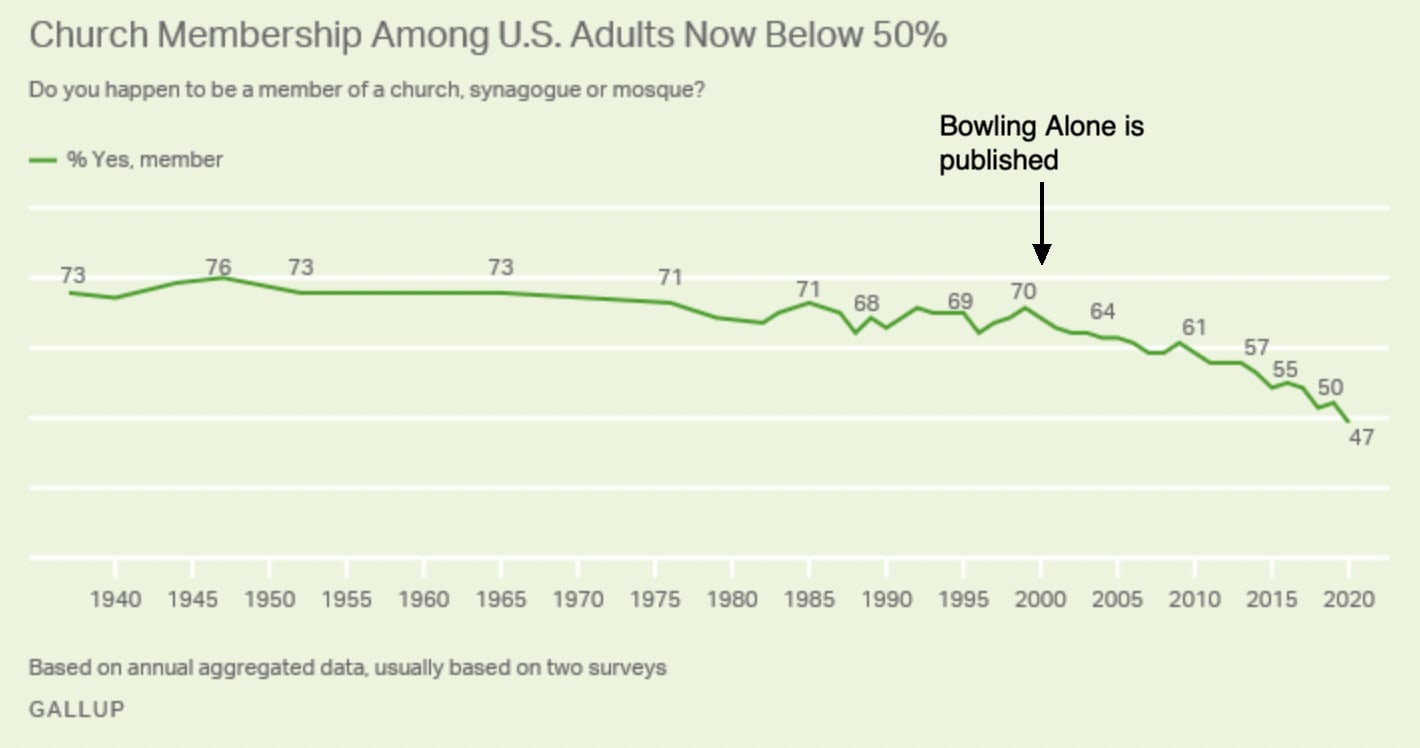
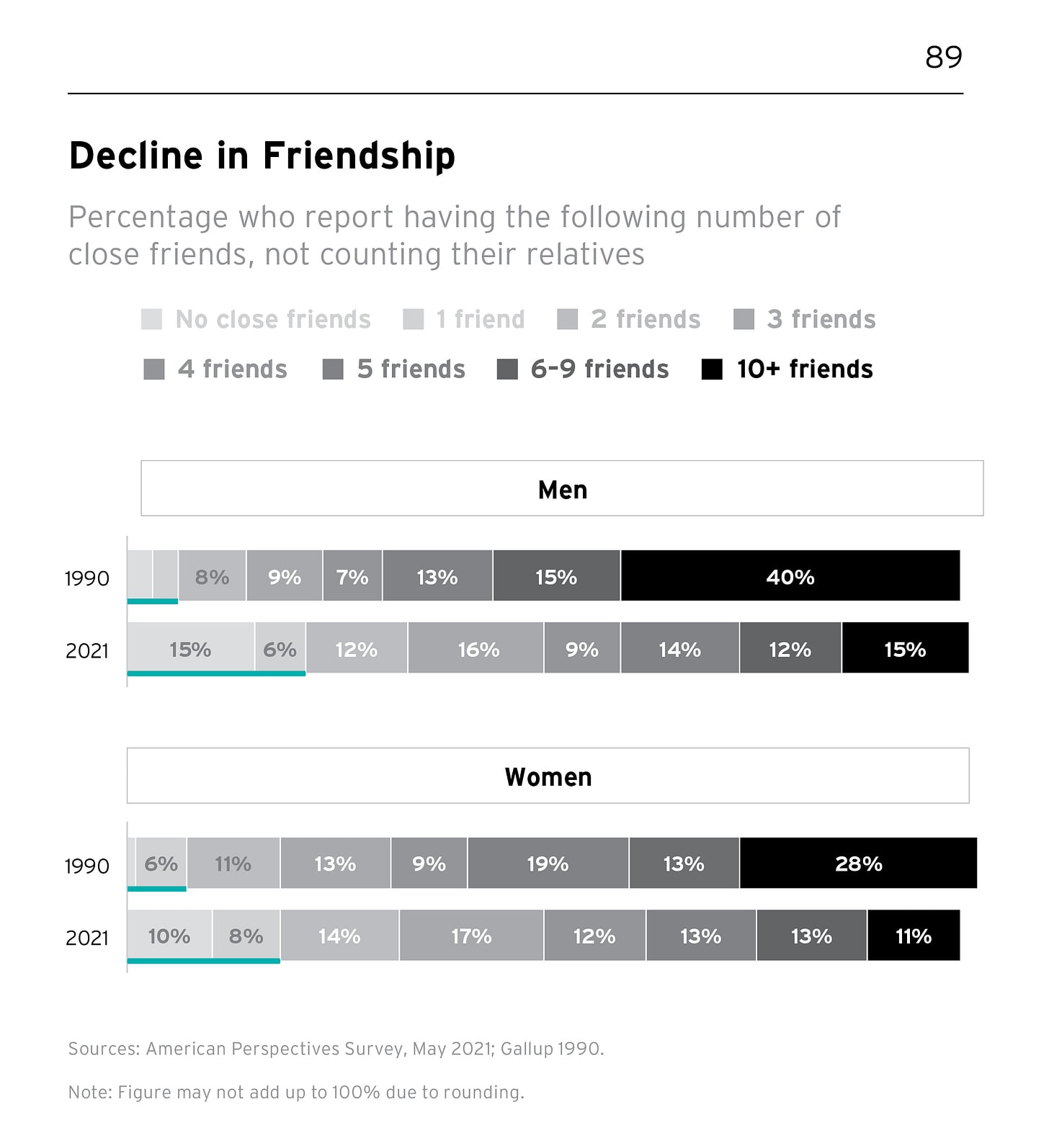

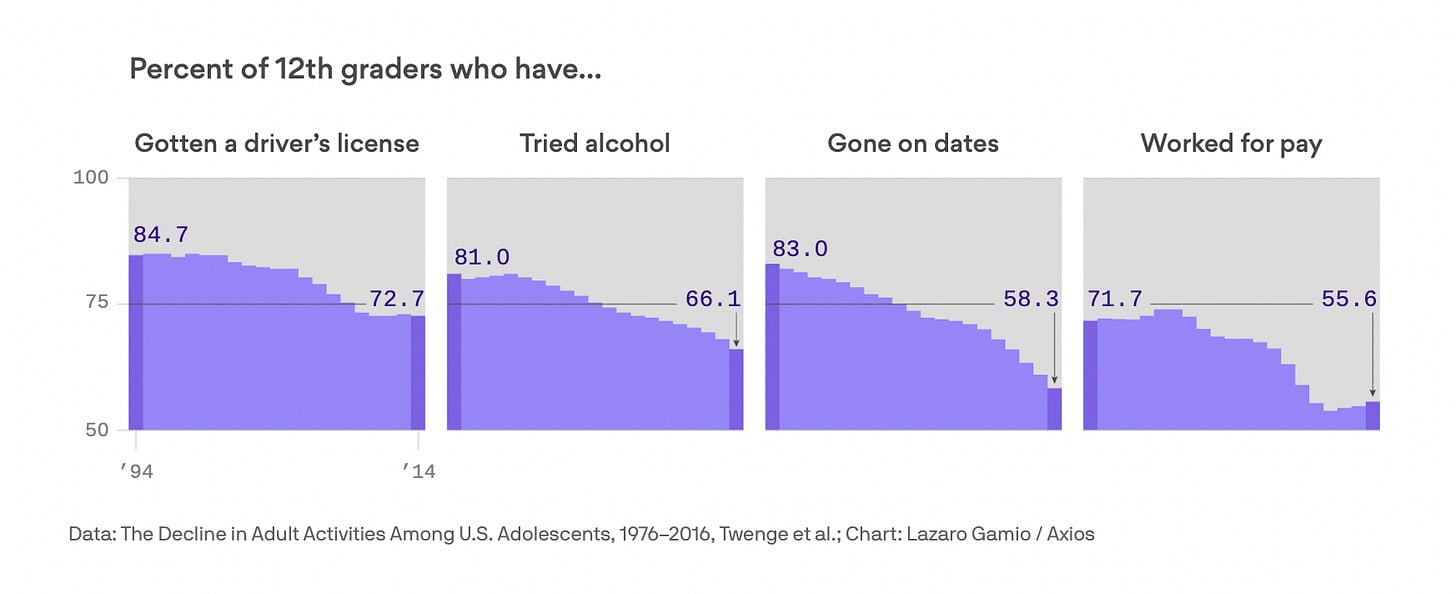
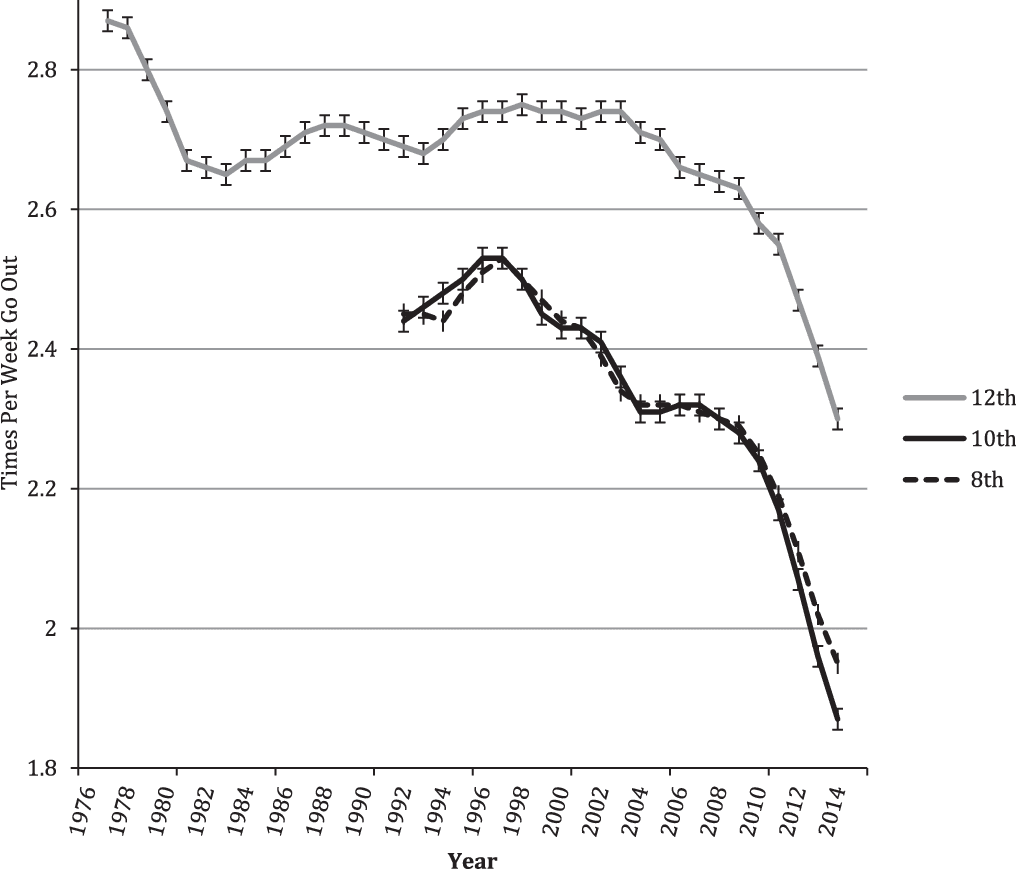
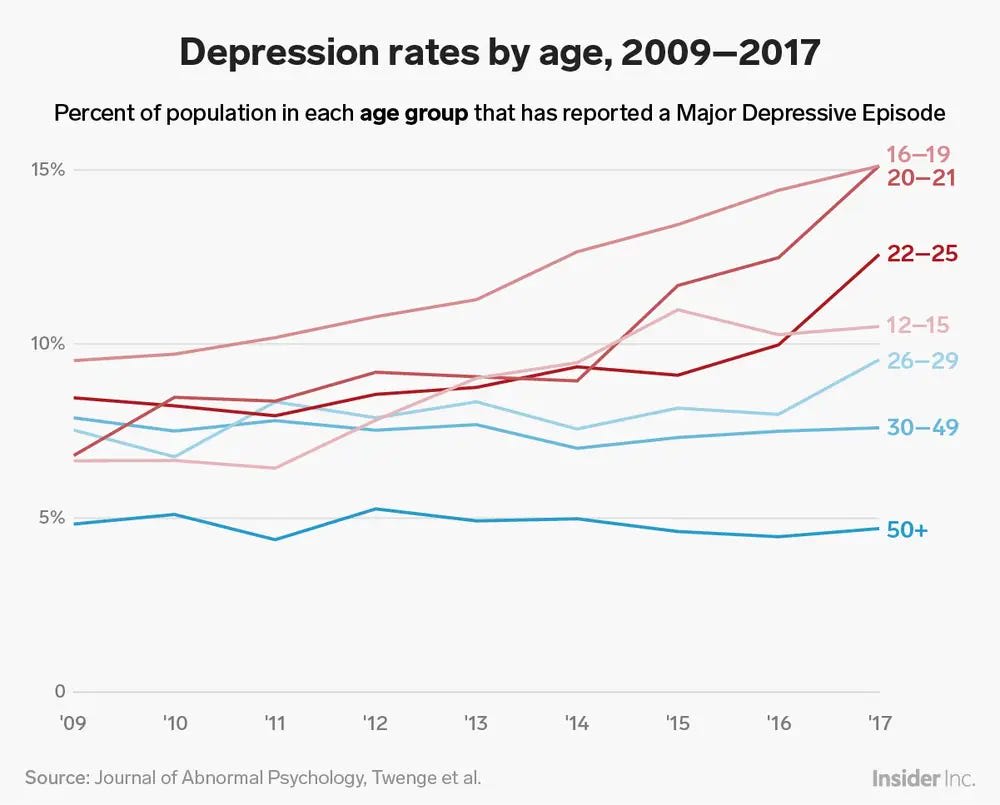

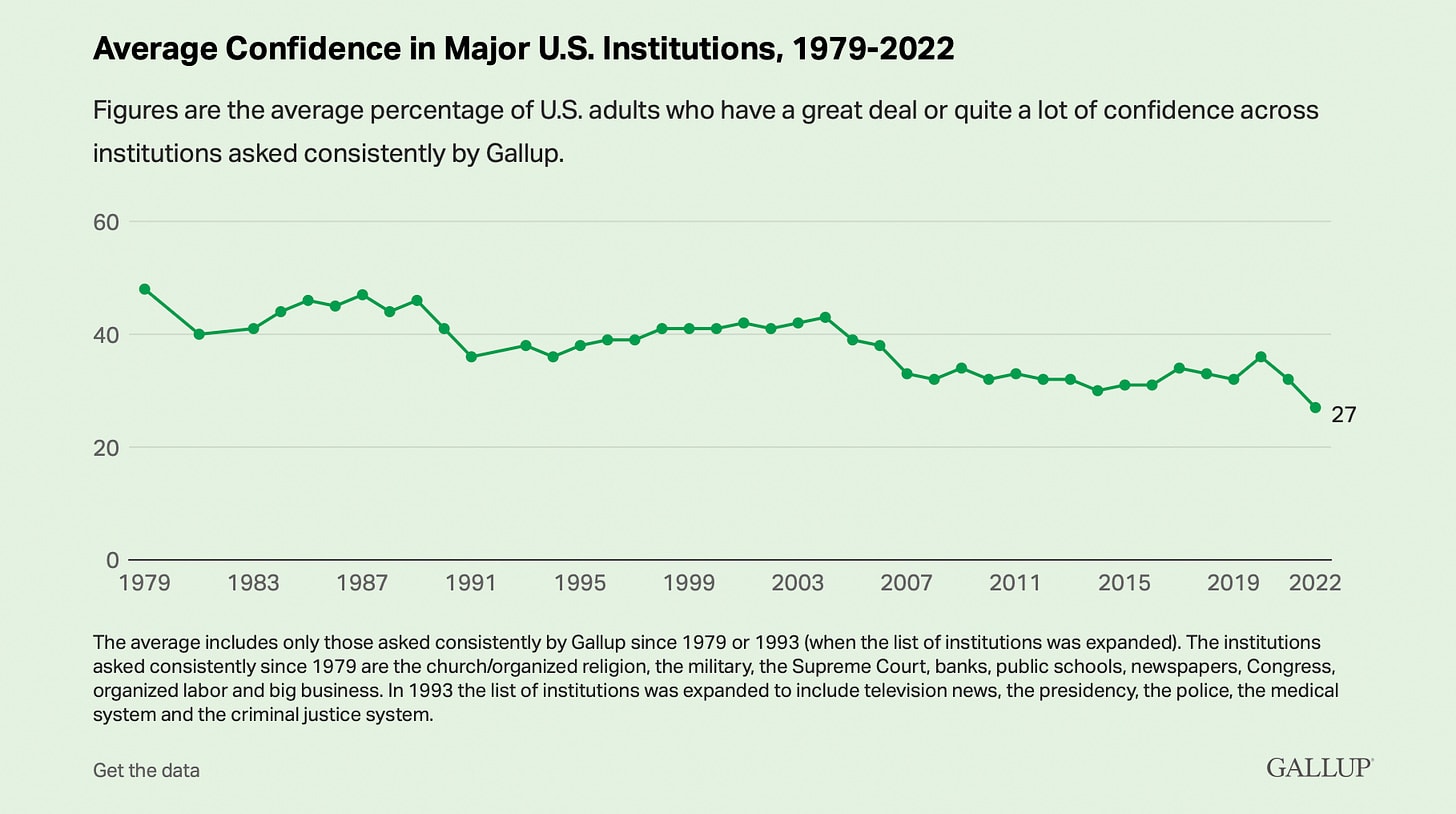
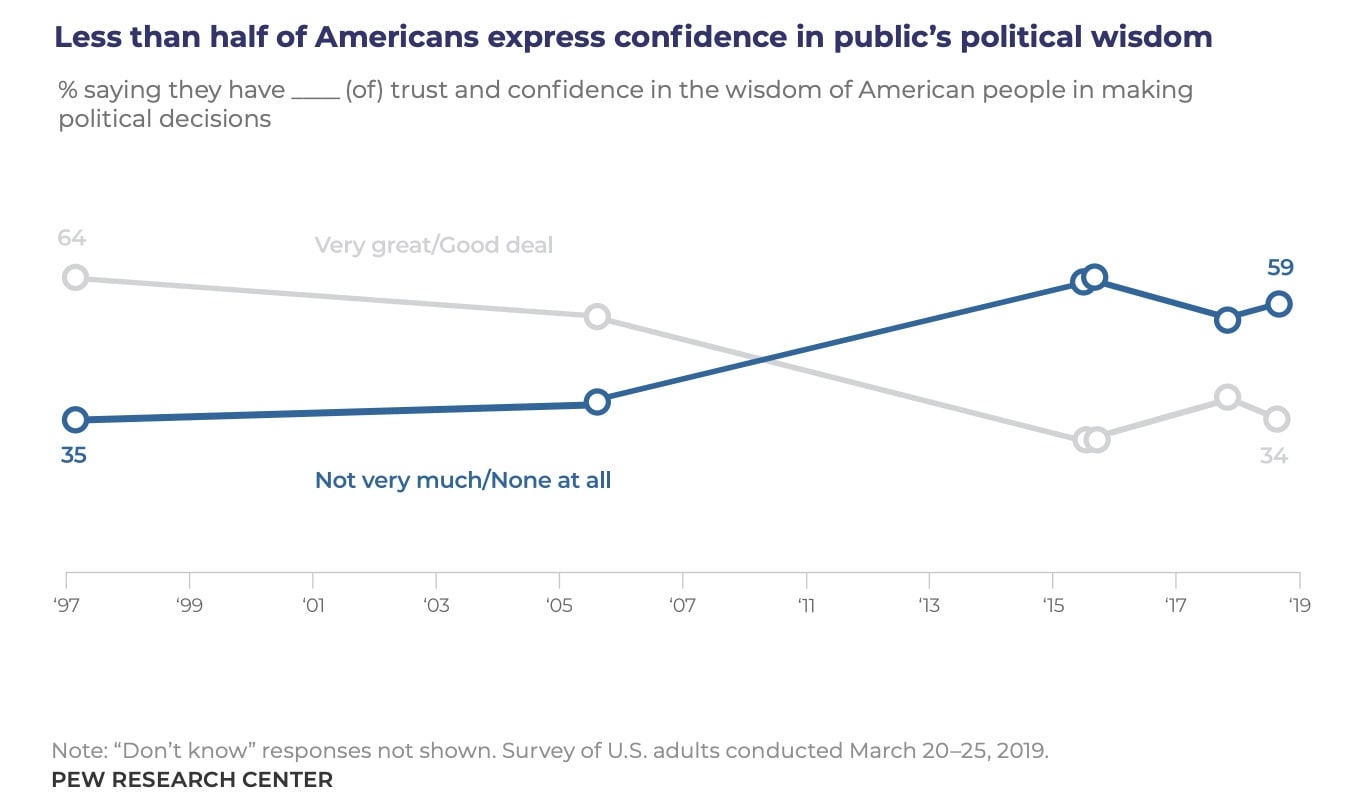
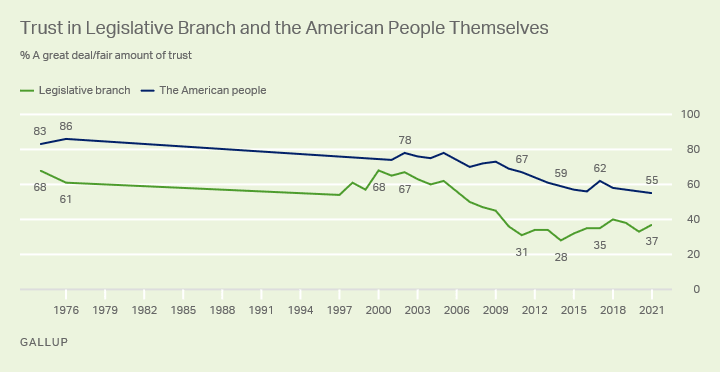
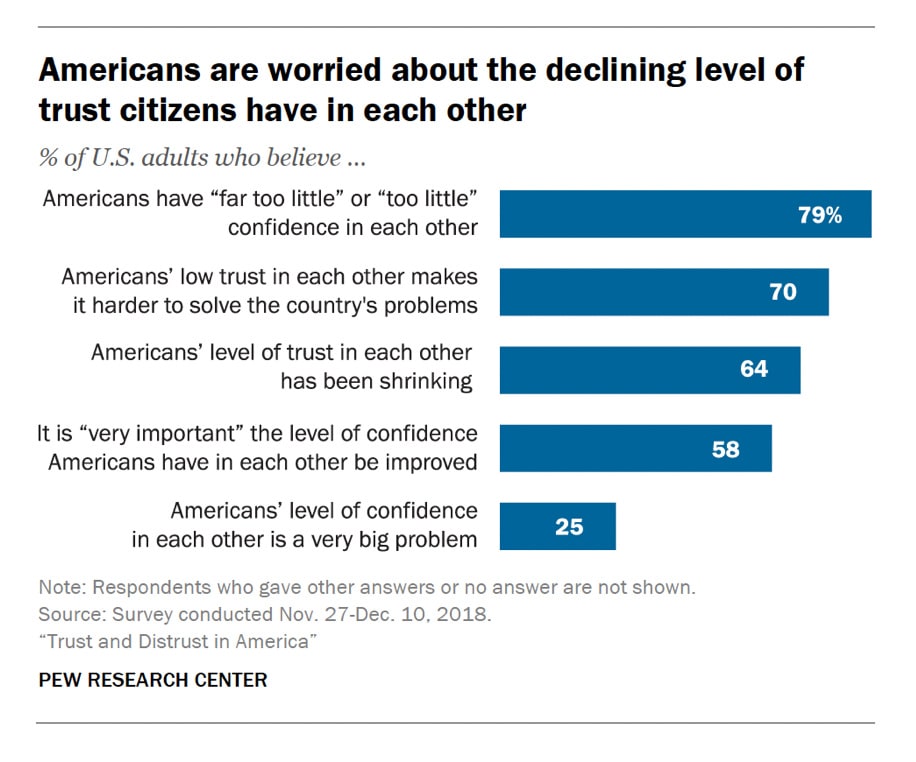
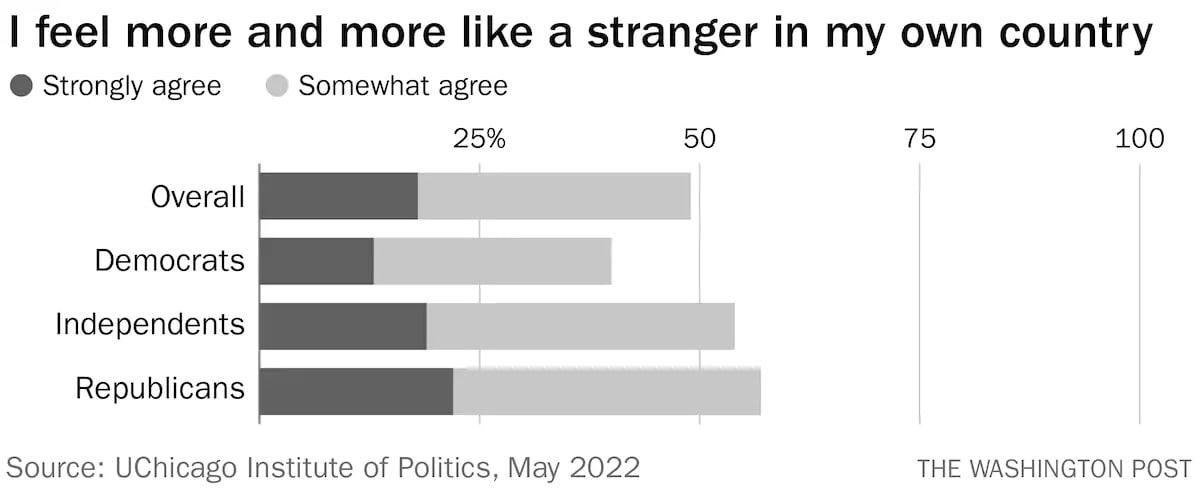
This a fantastic read. You dropped a lot of graphs I have been looking for but haven't found. ++ for connecting social ailments to political distrust and polarization, which might be the most important part of it from a long-termist perspective.
Imaginable yes
Not so sure about this unfortunately.
Focusing specifically on social networks, there is a really tragic market shape. Social networks have, well, network effects. The value of the network goes up as more people join. This makes them natural monopolies. Sadly, this means that once a clear winner emerges (insta, tiktok, tinder, youtube etc.), they can provide a relatively bad service, excluding the value of the network, and still win. This allows, or gives additional leeway to these companies hamster wheeling us. Considering this phenomena, and how big a deal out social health is, I think it's at least a possibility that the government should consider nationalizing social networks.
Even worse, people don't actually know, care, or care to know that these companies have perverse incentives. We have all collectively become dopamine addicts. The types of algorithms that are probably bad for us also make these apps popular (speculating more on this claim).
I think tinder is a pretty good case study.
Tinder has basically 0 incentive to help people match up in real life, outside of market competition. If you actually successfully go out and like someone and start dating, then you don't need tinder anymore. Moreover, if they artificially restrict the ease of matching with people, they can charge for the unrestricted service. And in fact, this is exactly what they do. This is classic monopolistic behavior. The value of their network is too high. Of course there is not a single "widget" that represents what everyone wants in a dating app, and hence competitors (plus tinder might really be so shitty that they have enabled the success of competitors), but these competitors to have natural monopolies over their respect domains and can basically engage in the same behavior. Running a dating app at scale should basically be free. It's a spreadsheet with a UI. Marginal costs are almost 0.
And as I mentioned earlier people might join facebook for the network, or tinder to try to find dates, but they stay for the dopamine. They quickly lose sight of what their goal was and just get on the hamster wheel. It's probably unrealistic to think we could convince the average person that if they just switched over to this new app, which was open source, but had no one on it yet, eventually we would all be a lot better off.
As I see it we are probably stuck in this sinking equilibrium unless either the government steps in and regulates these monopolies with strict standards that are set by social psychologists, or a medium sized group of good natured technologists make it a goal to break up these network monopolies by using new, open source versions at a cost to themselves, until the network value is such that the rest of society is willing to hop on the train.